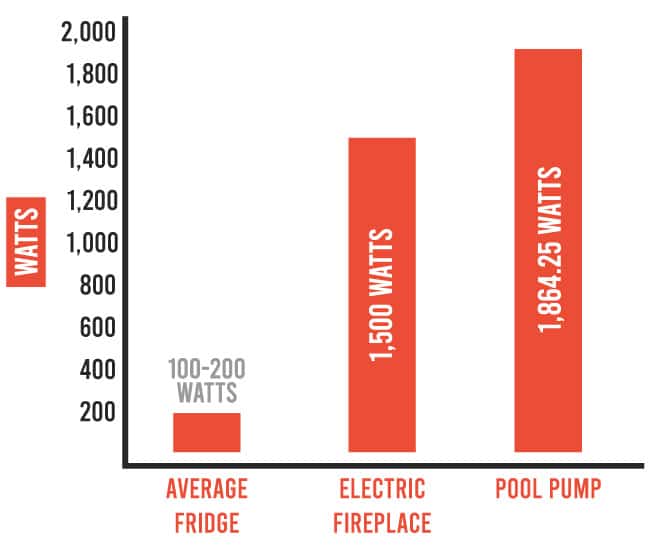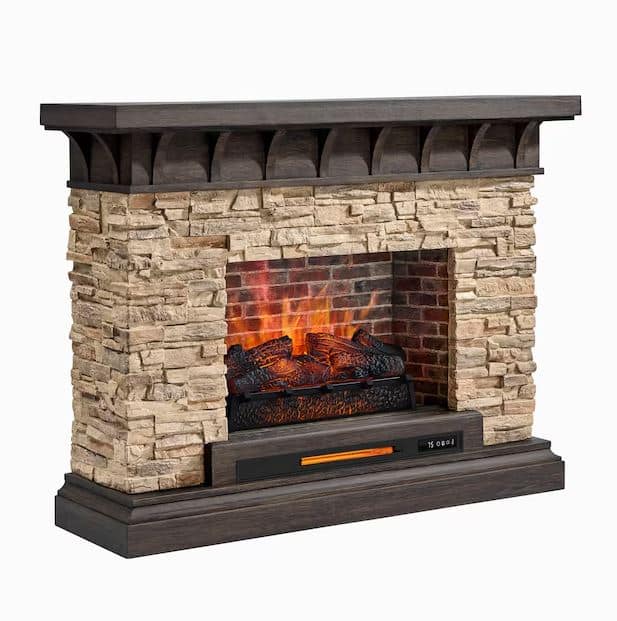In the realm of home heating, two popular options stand out: electric and infrared fireplaces. Both types deliver warmth and coziness, yet they operate in distinct ways that cater to different needs.
Functionality and Operation
Electric fireplaces rely on an electrical heating element combined with a fan to circulate warm air throughout the room. Once connected to a power source, the element heats up, and the fan distributes the heated air, creating a continuous cycle of warmth. Cooler air is drawn in, heated, and then pushed out again, maintaining a steady temperature.

Electric Fireplaces use more amperage and Electrical Current and typically need larger Electrical breakers and circuits in order to run efficiently. Typically speaking, they can use anywhere from 12amp up to 20 amps, depending on the amount of watts they are rated for.
This electrician in Naples recommends at least a 20 amp circuit and breaker to ensure there’s no overheating or over stressing the circuit.

Infrared fireplaces, on the other hand, employ a unique approach. Featuring an LED bulb that emits infrared light, these units send heat directly to objects and people. Encased by coils and a metal reflector, this unseen light effectively disperses the warmth.
The infrared method is swift, offering immediate comfort as long as the unit remains on, whereas turning off the unit causes the heat to dissipate rapidly, as it’s absorbed rather than circulated.
Heating Time
The time it takes to feel warmth from these fireplaces varies. Electric fireplaces generally take about 20 to 30 minutes to heat a room. They maintain a comfortable temperature for a while even after being switched off, allowing users to enjoy residual warmth and potential energy savings.
Conversely, infrared models provide almost instantaneous heat. However, the warmth vanishes quickly after turning the unit off, as the heat is absorbed directly by surrounding objects. This might appeal to those who need fast comfort, though it requires the unit to stay on continuously for lasting warmth.
Safety and Efficiency
Safety-wise, these fireplaces are designed with precautions in mind. Unlike traditional wood-burning fireplaces, they do not emit smoke, making them a healthier choice, particularly for the elderly or those with allergies. Both types generally feature protective casings that remain safe to touch, and some even include timers to prevent overheating.
An important consideration is that electric fireplaces may dry out the air. Individuals with respiratory issues might find infrared fireplaces a better alternative due to their lower impact on air moisture levels.
Design and Style Options
Aesthetically, electric fireplaces offer a wider array of styles and designs, making it easy to find a model that complements any décor. From traditional mantle looks to sleek, modern wall mounts and even TV consoles, electric fireplaces aim to mimic the visual appeal of a real fireplace. The choice is expansive, allowing for both functionality and visual enhancement of the living space.

Infrared units, on the other hand, focus more on heating capacity than style. They lack the realistic flame appearance that many electric fireplaces offer, which might be less attractive for those seeking ambiance in addition to warmth. If the primary concern is efficient heating and style is less of a priority, infrared fireplaces provide a no-fuss solution.
Practical Usage
Both types of fireplaces are user-friendly and require minimal maintenance. Their operation is as simple as plugging them into an outlet, making them convenient additions to any home. With the colder months approaching, investing in either an electric or infrared fireplace can significantly enhance comfort levels.
For individuals seeking a balance between efficiency and aesthetics, electric fireplaces may present the better option. Those needing prompt, effective heat with low environmental impact might lean toward infrared fireplaces. Ultimately, the decision hinges on personal preferences concerning heat delivery, design aesthetics, and the specific characteristics of one’s living space.
Regardless of the choice, both electric and infrared fireplaces can create inviting and warm havens to unwind in. By assessing the features and functions relevant to individual needs, it becomes easier to select the fireplace that will best serve one’s home heating requirements.
When deciding between these options, it is crucial to evaluate the benefits each brings to the table, whether it’s the rapid heating capabilities of the infrared unit or the versatile design choices of the electric model. Taking into account factors such as air quality, style preference, and safety will ensure a decision that delivers both comfort and satisfaction.
Thus, understanding these differences and advantages can guide an informed decision, contributing to a cozy and energy-efficient environment that aligns with both lifestyle goals and aesthetic tastes.
